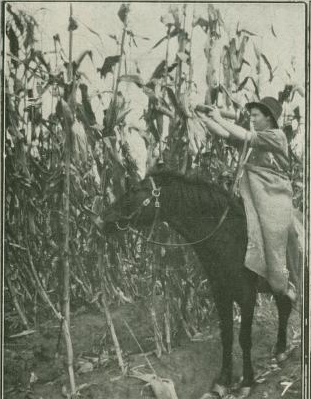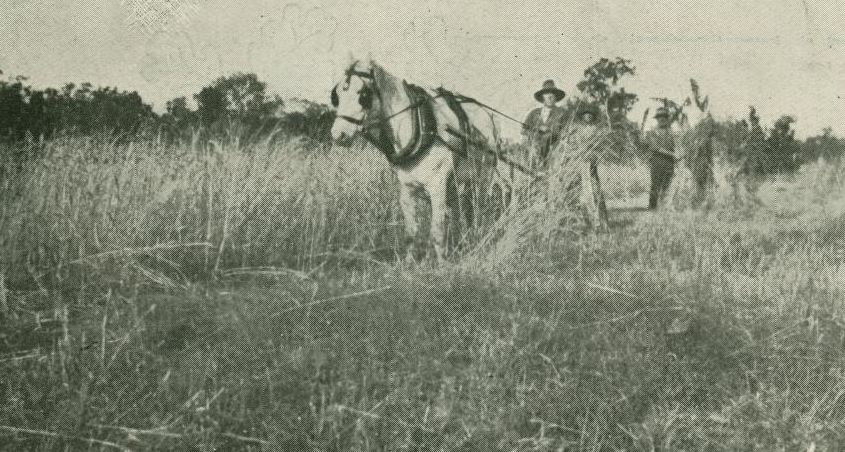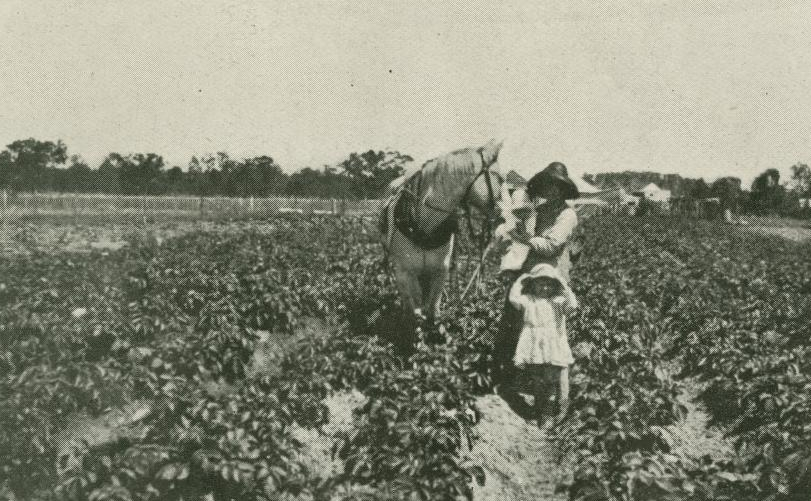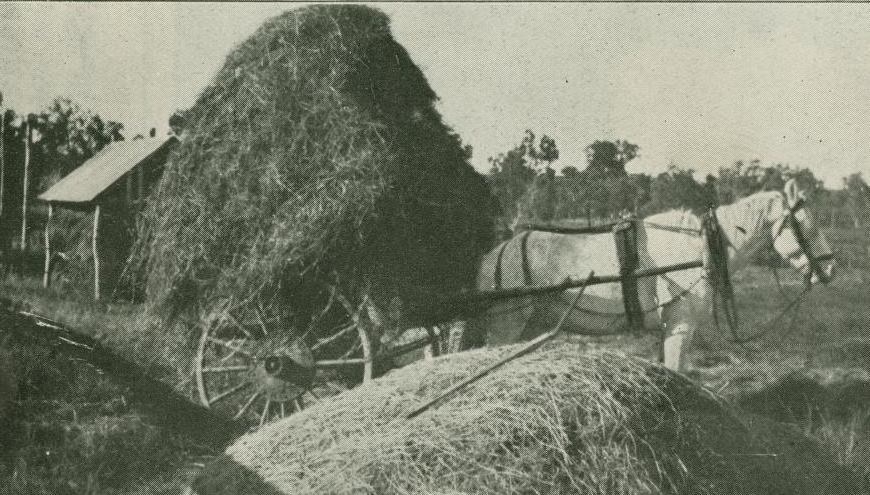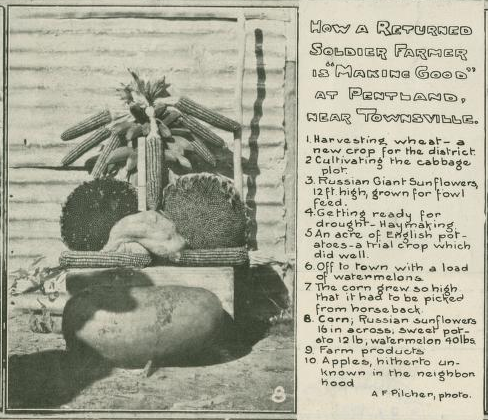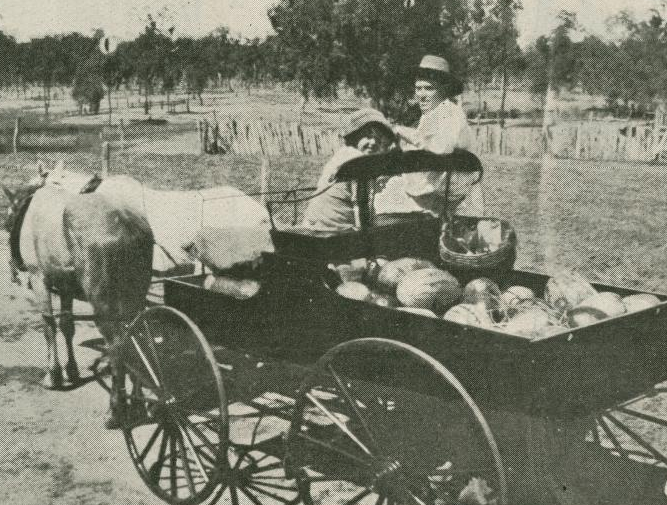Soldier Settlers
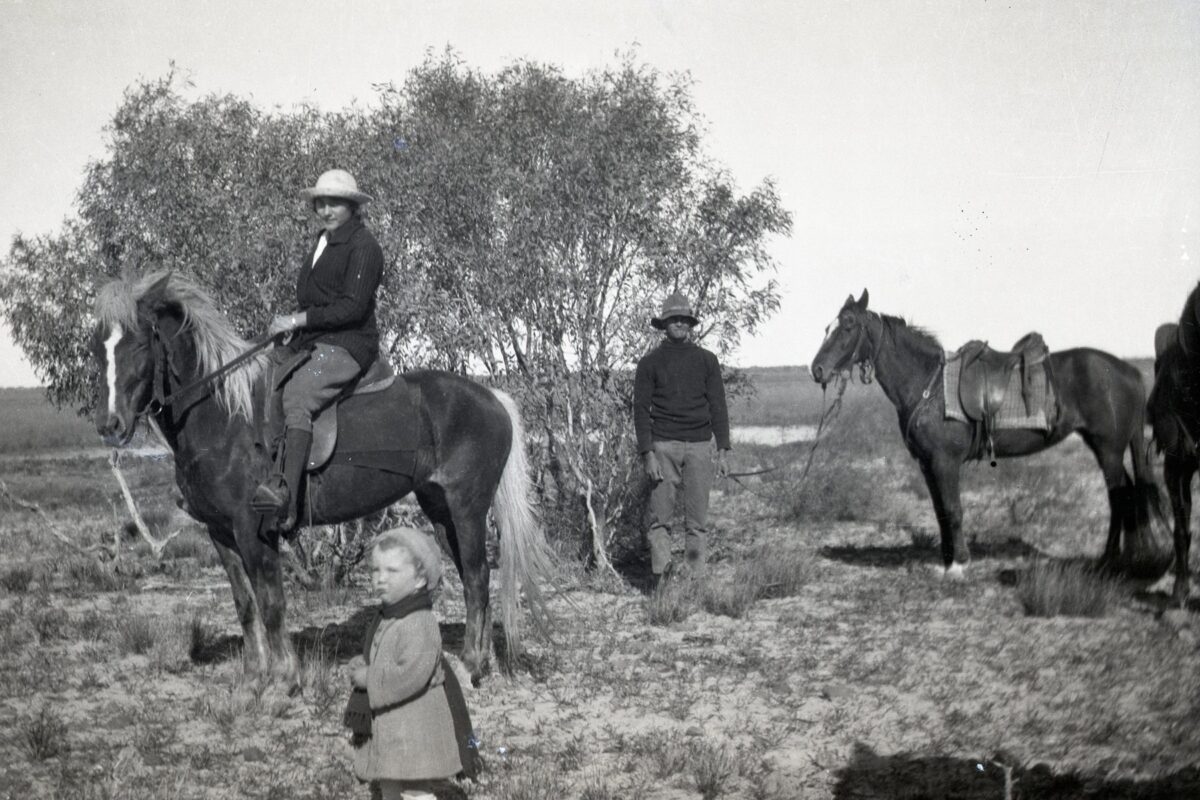
Waler Data Base @ Facebook. Image: Alison Halupka (nee Telfer) private photo: ‘1920c Agnes Jean Telfer (junior), likely at Nappa Merrie Stn in the south-west corner of Queensland, just west of Innamincka, where she was a ‘Ladies Companion’ to her Broken Hill friend, Madge King who married Clive Conrick, and Governess for their children. We have a published collection of her diaries from that time. (Telfer collection).’
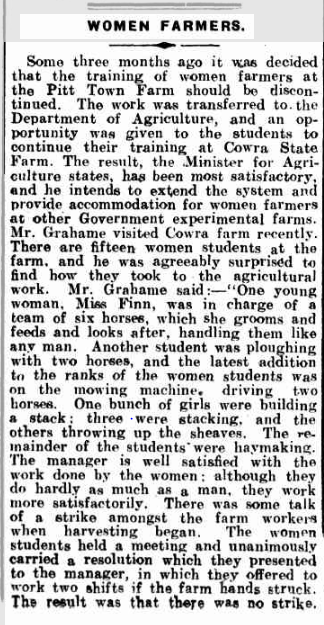
Image: The Albury Banner and Wodonga Express, 30th Nov. 1917.
In 1917 both men and women were training in farm skills at Pitt Town Farm. However, the government decided to keep the farm for training solder-settlers to farm – and sent the women to Cowra Experimental Farm as many of the men had refused to work with the women.
Cowra had been used for the “Dreadnought” program where boys – teenage volunteers – came from England to be trained as farm labourers. The last of the boys there in 1917 were sent to war and to farms (the Dreadnought program continued after WW1 until 1939).
By 1920 Cowra went over to training returned soldiers for farming. There was accommodation for 26 there.
So many soldiers became soldier-settlers after WW1, on government allocated blocks which the men had to pay off. Most of these were in marginal country, it was hard to make a living for many. The men learned to work with horses and became very good at it of course.
Wonderful photos and information sent in by Alison Halupka, thank you. Wow, fabulous Walers! So good to see these treasured family photos, privately held.
“Reg Telfer was a WW1 soldier settler at Monash, S.A. where he took up a fruit growing property. Prior to the war he’d lived at Broken Hill with his family. He wasn’t an accomplished horse man, only learning to use them after the war, but he was always an animal lover.”
Bandy is in superb condition and listening for orders! We’ve never stopped for a photo before? What is it? Well done Mr Telfer!
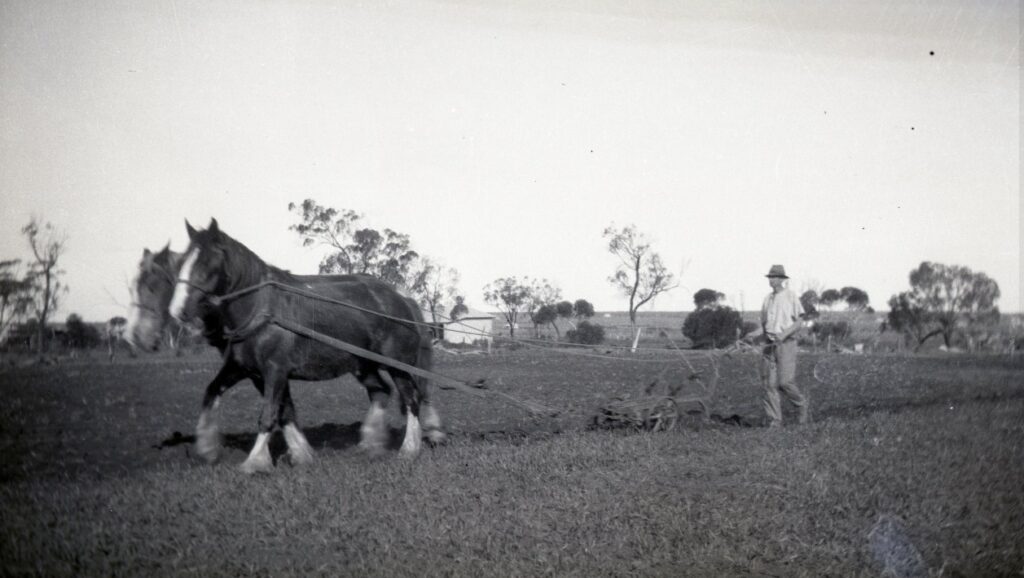
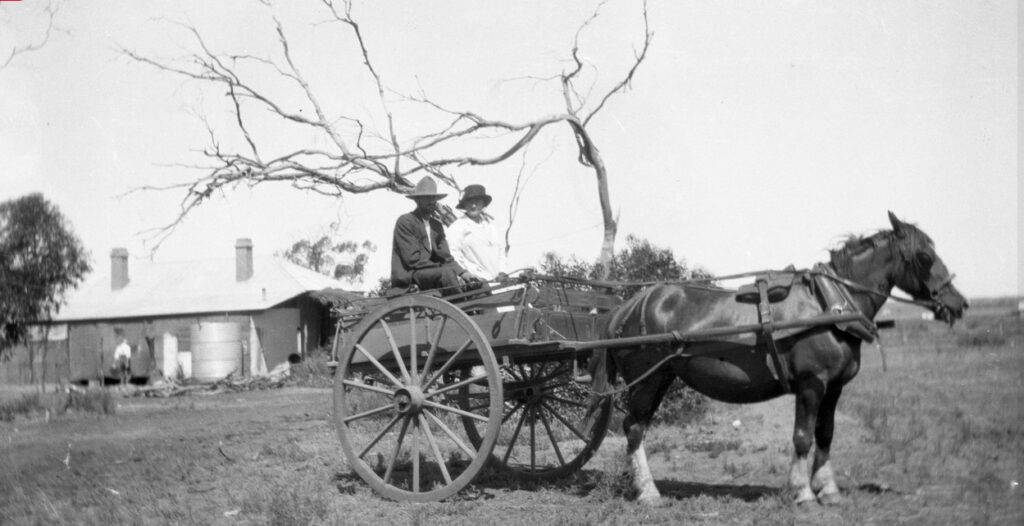
Images from Alison Halupka (nee Telfer): 1922 or 1926C Reg Telfer ploughing at Monash SA, most likely for a fodder or hay crop. Reg was a WW1 soldier settler, allocated a fruit block after the war. While growing predominantly grapes as their source of income, they needed fodder to fuel their means of transport and work ‘vehicles’ … their horses… plus a house cow, chooks etc; 1920sC. Reg Telfer and his mother Agnes Telfer (nee Kay), horse Bandy and Reg’s Monash home in the background.
Barry Stephan comment on FB: “Yes saw some of those SA soldier settlers blocks taken up after WW1 when we filmed ‘The Lighthorsemen’ up near Hawker SA in 1986. They had 600 acre blocks. The first few years were terrific but then the country returned to very low rainfall and after a few crop failures they walked off. We used some of their abandoned dwellings in the movie as you can see if you watch it”.
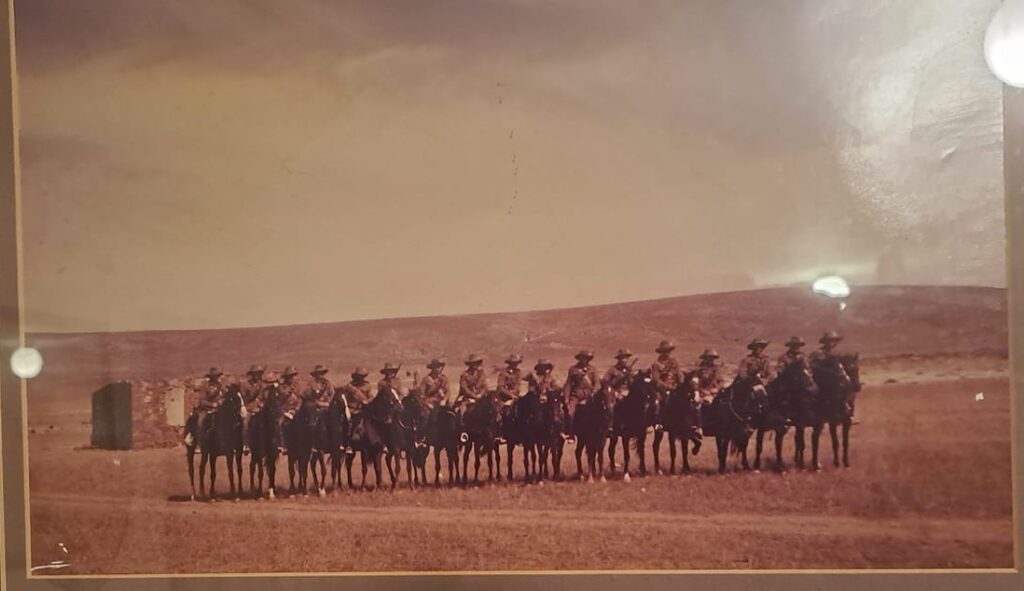
Image supplied by Barry Stephan: “One of soldier settlers dwellings behind a line of the ” 4th Lighthorse Regiment ” in Palestine. Actually Hawker SA 1986! We were proud and honoured to portray those men.”
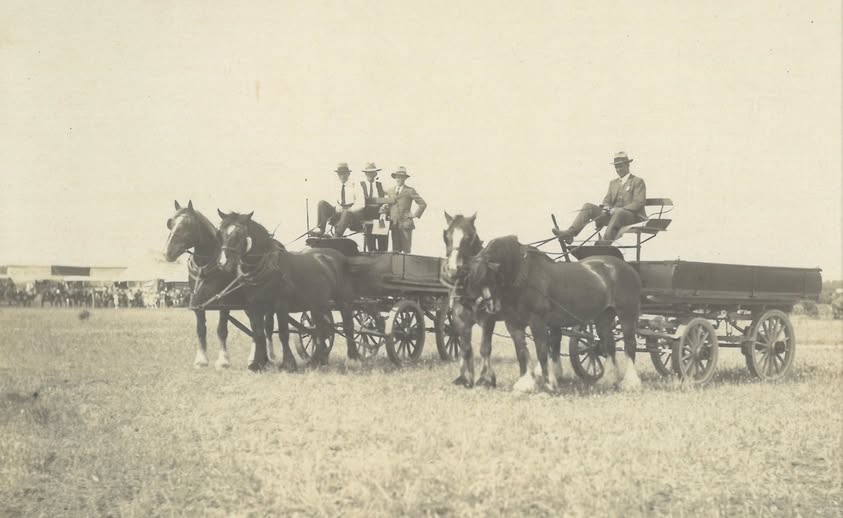
Image supplied by Alison: ‘1930’s Barmera (SA) Show, Roy Whitelaw on far left. (original photo from Rob O’Callaghan), Roy was a WW1 soldier settler at Monash SA. He served in the 9th Light Horse.’
Robert Leslie Busch of Hillston. Leslie had been in the 1st Light Horse in WW1, and after the war took up and farmed a soldier settler block.
Simon Andrews’ family photo and information about his grandpa: “I know very little about his time overseas, other than he left Aus on the SS Hawkes Bay and was in the 11-14 reinforcements. He was sent home with a hernia after contracting Mumps as well”.
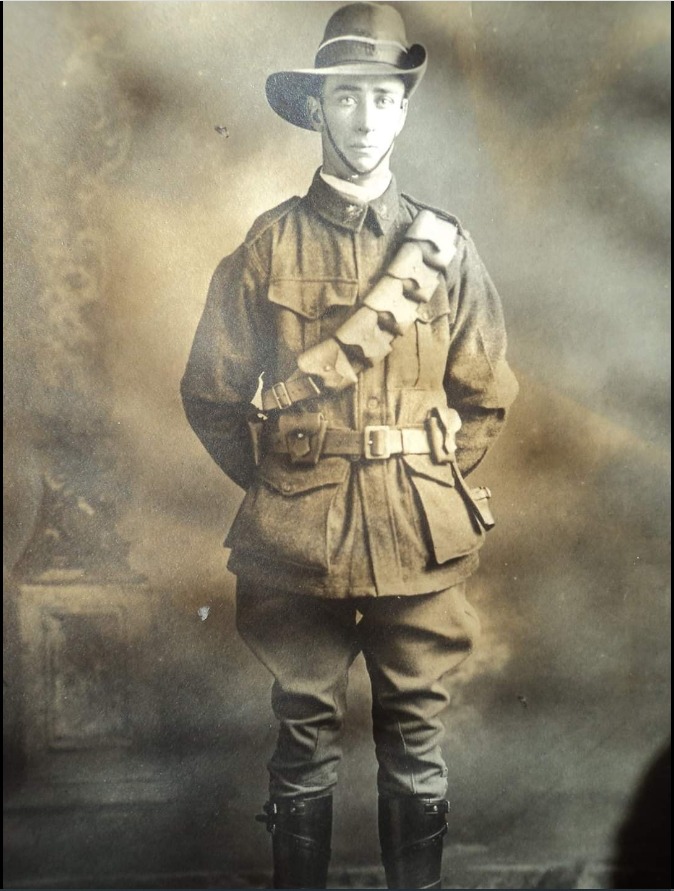
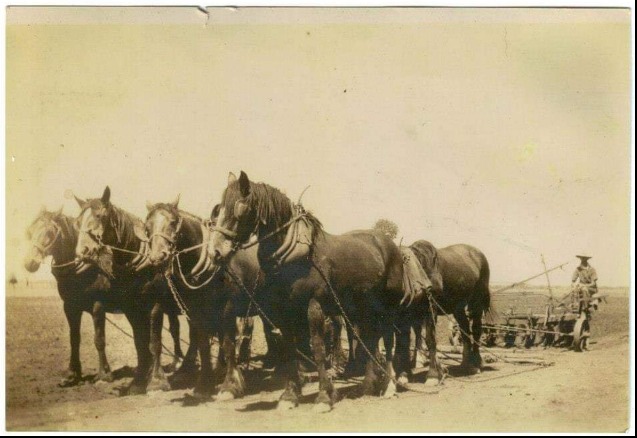
Simon Andrews’ family photo.
AWM Images: Muster parade of the 1st Australian Light Horse Regiment November 1918; The 1st Light Horse Regiment Returning to Romani from Katia; Helouan, Egypt 1914-1915… Taking horses across the Nile at Helouan, the First Light Horse Regiment
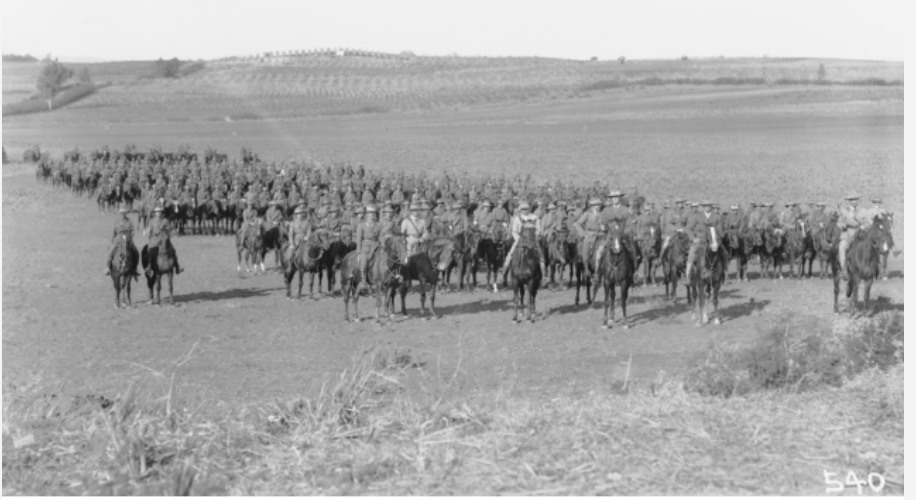
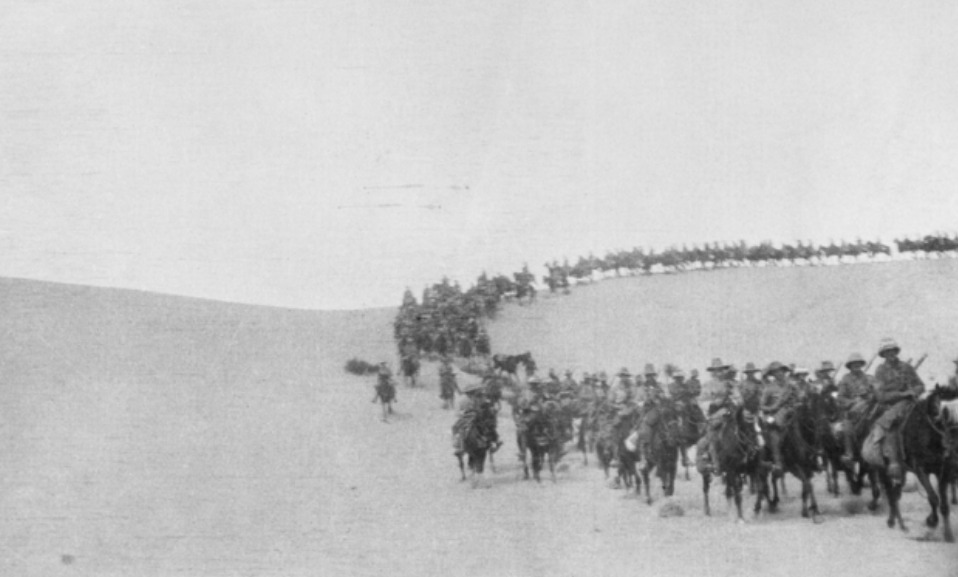
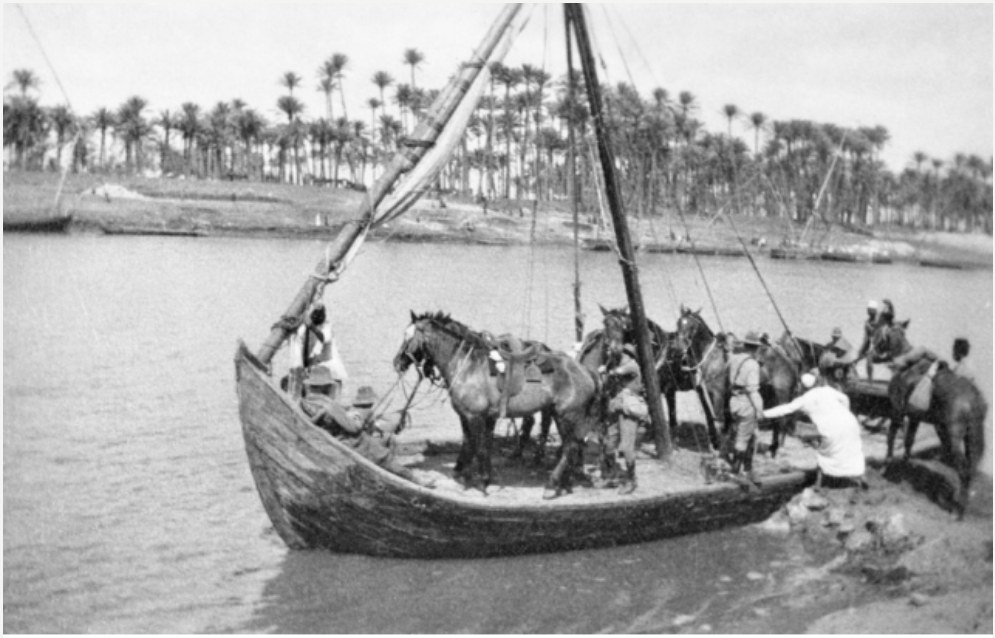
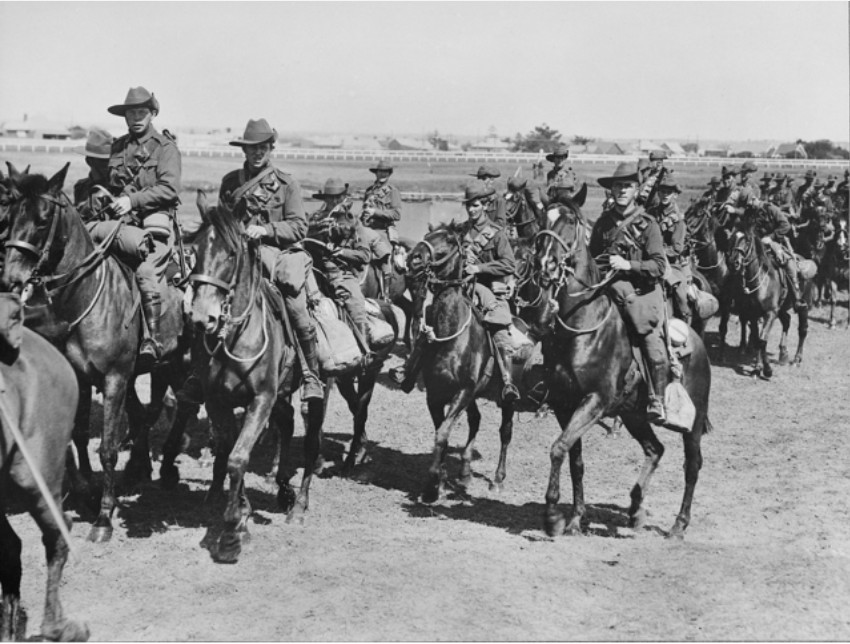
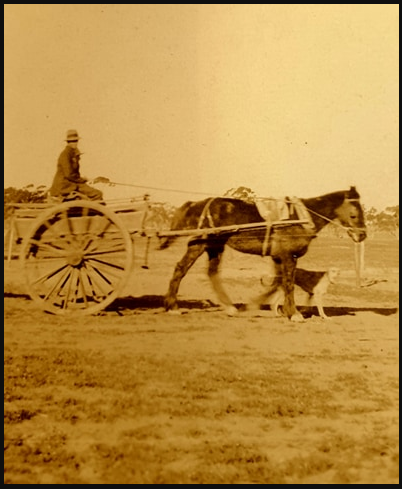
“My grandfather was on a soldier settlers block. He went by train from Spencer Street with his horse and dray and all his worldly belongings to settle at Werrimull.”
Katie East family photo.
Werrimull is in the remote part of north-west Victoria (near Mildura) known as the Millewa Settlement Area of the Mallee region, opened up to farming in the 1920s. Blocks of one square mile were allocated, generally too small to make a living in this marginal country.
Images: The Queenslander, 16 March, 1918.
Some examples from a series of photos taken on a soldier-settler block, “Pentland” near Townsville.
Lots of work and great crops. Sweet corn so high it had to be picked from horseback!
How important was the little grey horse, and his companions?!
